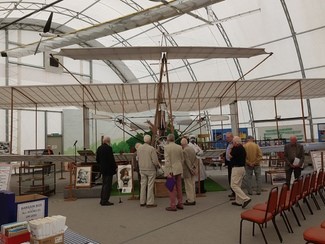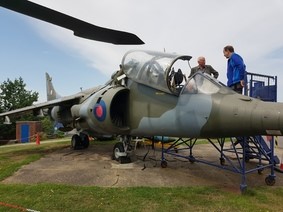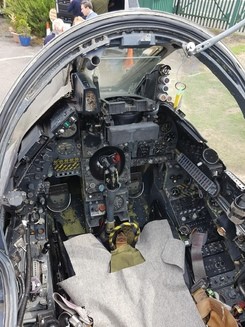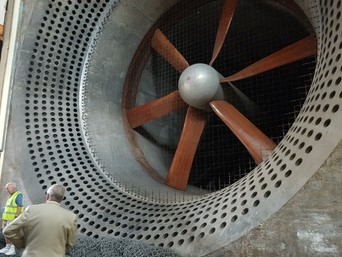Some 20 Probus members gathered at the Museum on the edge of the Farnborough airfield. We were given an introduction to the history of aviation at Farborough, starting with the move of the Aldershot Ballon Factory to Farnborough Common in 1905. This led to experiments with heavier than air machines, and Samuel Cody’s flight in British Army Aeroplane 1A in 1908, being the first sustained and controlled flight in a British designed and built powered aeroplane. Volunteers have built a full size replica of Cody’s plane, which we were able to inspect close up. From those pioneering days the Royal Aircraft Establishment, as it was named after the 1914/18 war, has been at the forefront of research and development into aircraft design and building.The museum has an extensive collection of artifacts showing these developments, from high altitude flying suits, a Baker Martin ejector seat, aerial reconnaissance equipment, carbon fibre components, and even one of Frank Whittle’s developmental jet engines. Whittle of course is well known as the inventor of the jet engines that power all major commercial and military aeroplanes today.
Our guide, one of the volunteers who look after the museum, took us around the collection, highlighting a few of the many aeronautical inventions and developments made by people working at Farnborough. Outside is selection of relatively modern military aircraft. It was possible to sit in the seat of a Harrier jump jet, and a Puma helicopter. Both with full instrumentation in place. The Harrier even had a formidable looking bomb ready to be loaded.
Following that we had an excellent buffett lunch before proceeding to the two wind tunnels which have been preserved for the museum.
First was the 4 x 3 foot wind tunnel. This is a beautifully constructed timber structure, made in 1946, and capable of producing a “clean” airflow at speeds up to some 160 mph. This had been used to test scale models of supersonic aircraft, and to calibrate equipment.
Next was the gigantic 24 foot wind tunnel, used to test full sized aircraft and components such as wings. It has also been used to test racing cars prior to going on the track. We were able to walk the full length of the tunnel, from the 30 foot fan, producing wind up to 125 mph, through the vast concrete vanes directing the air round the doughnut shaped tunnel, and out at the test section, where the test subjects are mounted.
The visit was full of interest and thanks must go to the volunteers who saved the site, and who created the museum and look after it now.
 |  | |
 Harrier jump fighter jet, open for visitors. Note the pilot’s seat to the right. |  | |
 | The 24 foot wind tunnel was immense. This is a view of the 30 foot air intake. A walk round the internals of the structure was highly instructive! |
